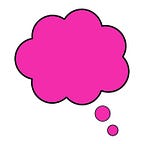5 Quick Ways to Remember New Vocabulary Words
Expanding one’s vocabulary is a lifelong challenge. At no time in our lives do we not stop learning new words. However, what if you need to memorize new vocabulary words for a test? The SAT or GRE? Simply reading the dictionary, while perhaps helpful for some, will not mean you’ve committed the words and definitions to memory. Unless you have a photographic one, that is. No, for the rest of us, memorization of new vocabulary words presents a challenge. Remembering them benefits from studying, context, and association.
Fortunately, mnemonics (pronounced ne-mahn-ics) can help. These memory tricks are devised to take the familiar and use it to better remember the unfamiliar. Once an association between the two is made, the odds of memorization go up. Here are five quick ways to remember new vocabulary words with the assistance of mnemonic techniques. Which one is best for you?
Visualization: Visualization helps us create associations within our minds between what we already know with what is new. For instance, the word “aural,” which can be defined as “of or pertaining to the ear or the sense of hearing,” could be remembered by visualizing a cross-section of an ear, with sound waves emanating from it, creating a kind of “aura.” This image not only relates the word to the ear, but also, the act of hearing.
Cartoons: Vocabulary cartoons have emerged as an excellent memorization technique. Meant to be humorous, a cartoon provides our brains with immediate context from the drawing and the caption. The most well-known vocabulary cartoons today (from New Monic Books, Inc.) not only provide a cartoon reference, but also a definition (of course), a word link (e.g. fjord and Ford), and example sentences. A multi-sensory approach, the vocabulary cartoon can be absorbed quickly and studied for hours on end.
An example: The word “fathom” would be defined (fathom: to comprehend, understand) and then word-linked to a familiar term. In this case, “fat thumb.” In an accompanying cartoon, there’d be a person with said “fat thumb,” trying to “fathom” how this could happen. The funny caption would make use of both the new word and the word link. In most cases, the funnier or more bizarre the association, the better for us to remember.
Keywords/Rhymes: Part of auditory mnemonics, keywords are like the word links noted above. Your brain already knows certain words. Thus, associating a new word with a “known” can help in creating context and thereby, meaning. An example: “giddy” rhymes with “city.” The word “giddy” means “dizzying.” When you rhyme the two words, you could also visualize a person being dizzied by how fast-paced the big “city” is.
Language Play: You could take each letter from the word you need to remember and link it to a new word, which when put together creates a fragment, sentence or rhyme. For instance, the word “snafu” means “a ridiculously muddled situation.” To remember the spelling as well as meaning of this word, you could use:
snafu = Situation Normal, All Fouled Up
This can work for longer words, too. Just create a sentence/fragment to fit. For instance, “enfranchise” or “give voting rights.” Let’s make it:
enfranchise = Everyone Now Feel Right And Noble, Choose How It Should End
You could also create a sentence using the word and its meaning. The visualization example above for “aural” could be turned into a sentence, making use of words we know. In this case, what makes it memorable is the relationship between the four familiar words: “Aural spelling errors include whether and weather, their and there.”
Songs: Why is it that we can remember the lyrics to a song so easily? It’s because of the music associated with it. We learn the lyrics in conjunction with the music and as a result, we recall both at the same time. Such is the thinking behind musical mnemonics, an auditory memory trick that aims to be as easy as “do-re-mi-fa-so-la-ti.” One way to use this technique is to take an existing tune and simple re-write the lyrics with vocabulary words and their definition. For instance, take “Jingle Bells.” Try instead: “Au-da-cious or fa-vora-ble; suggestive of good things.” It can be anything. Whatever works for you.
Each of these mnemonic techniques has proved successful for students. However, it’s also true that you’ll need to find which one is effective for you — if any. Each technique will also take a bit of effort on your part (to come up with a visual, a sentence, or rhyme), but the reward in school and life will be well worth the investment.
###
